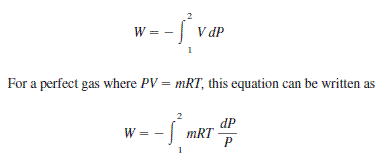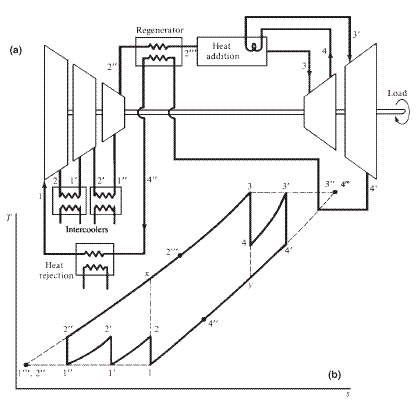- This topic has 2 replies, 1 voice, and was last updated 2 years, 11 months ago by
حمید.
-
CreatorTopic
-
2021-08-03 at 11:08 am #746
امیر
توربین گازی در ایران زیاد میباشند/آیا پکیج خاصی در ایران هست که راندمان توربین را بالا ببرد؟ و راه های ارزان و قابل دست رسی برای بالا بردن راندمان چه است.؟
توربین گازی در ایران زیاد میباشند/آیا پکیج خاصی در ایران هست که راندمان توربین را بالا ببرد؟ و راه های ارزان و قابل دست رسی برای بالا بردن راندمان چه است.؟ -
CreatorTopic
-
AuthorReplies
-
2021-08-03 at 11:08 am #2564
seied mohsen mousavi
ba salam. hamantor ke midanim toorbinhaie gasi meghdare ghabele tavajohy az energye masrafi ra besoorate gazhaie dagh az entehaie nazeleshan varede mohit mikonand,ke in khood baese kaheshe randemane niroogah mishavad. baraie ezdiade bazdeh noee digar az niroogah betore hibrid ba niroogahe gazi estefade mishavad,ke az gazhaie daghe khoroji az nirogahe gazi baraie garmaiesh ia pishgarmaieshe abe iek niroogahe bokhari estefade mishavad. dar kol harche enerjie door rizeman kamtar shavad bazdeh afzaiesh miabad.
2021-08-03 at 11:08 am #2565حمید
تا آنجا که به تکنولوژی ساخت این نوع توربینها مربوط می شود، بازده چرخه توربین گاز با افزایش دمای گازهای احتراقی ورودی به توربین افزایش می یابد. بنابراین نوک پیکان تلاشهای شرکتهای سازنده ارتقاء تکنولوژی ساخت مواد بکار رفته در پره این نوع توربنها برای کارکرد مناسب در دماهای هر چه بیشتر است. امروزه این دما در حدود 1100 تا 1260 درجه است و سازندگان مختلف با صرف هزینه های زیاد تمایل به رسیدن به دماهای بالاتر ( 1540 درجه یا حتی 1650 ) هستند. کاربرد چرخه های ترکیبی گاز و بخار نیز می تواند پاسخ خوبی برای راندمان پائین توربن های گازی باشد تا ضمن اصلاح راندمان پائین از مزیت راه اندازی سریع و انعطاف پذیری کارکردی در منحنیهای متنوع بار نیز بهره مند شوند. بالا بودن دما به معنی بالا بودن نسبت فشار نیز هست. هزینه سرمایه گذاری واحدهای با نسبت فشار بالاتر بیشتر از واحدهای با نسبت فشار پائین تر است، در مقابل کاهش مصرف سوخت این اختلاف هزینه سرمایه گذاری را در طول زمان جبران می کند. مسئله دیگر در دماهای بالاتر امکان افزایش احتمال خوردگی است. دماهایی که امروزه در توربنهای گازی متداول است آنها را قادر می سازد تا در تأمین بار قله و در صورت استفاده از مبادله کننده های گرما برای تأمین بار دوره ای و گاهی بار پایه مورد استفاده قرار گیرند. دماهای بالاتر در آینده نیروگاه های گاز را رقیب اصلی نیروگاه های بخار قرار خواهد داد. مسائل تکنولوژیک مرتبط با دمای بالا در توربین گاز بطور کلی به روشهای تأمین مواد مناسب ، خنک سازی مناسب و انتخاب سوخت مناسب بر می گردد. از نظر اقتصادی چرخه ساده توربین گاز برای بسیاری کاربردها مثل تأمین قله بار یا رانش هواپیما کافی است ولی در واحدهای تأمین بار دوره ای یا پایه اصلاحاتی در سیکل ترمودینامیکی برای افزایش توان خروجی و راندمان به شرح زیر ضروری به نظر می رسد. 1- بازیابی 2- خنک سازی میانی در کمپرسور 3- بازگرمایش در توربین 4- تزیق آب یا مه برای افزایش خروجی توربین
MODIFICATIONS OF THE BRAYTON CYCLE The simple gas turbine cycle is economically adequate for peaking units and jet transport. However, base-loaded units require modifications to improve their efficiency. Some modifications required, besides increasing the combustor outlet temperature, include the following: ● Regeneration ● Compressor intercooling ● Turbine reheat ● Water injection Regeneration Regeneration is the internal exchange of heat within the cycle. The turbine outlet temperature is usually higher than the compressor outlet temperature. Figure below illustrates the flow and T-s diagrams of a closed, nonideal Brayton cycle with regeneration. The compressed gas at point 2 is preheated by the exhaust gases at point 4 in a heat exchanger called a regenerator, sometimes recuperator.  If the regenerator were 100 percent effective, the gas temperature entering the combustor would be raised from T2 to T2?(T4). The heat added would be reduced from H3 – H2 to H3 -H2?. In reality, the compressed gas is heated to T2?because the regenerator effectiveness is always less than 100 percent. The regenerator effectiveness, ?R, is:
If the regenerator were 100 percent effective, the gas temperature entering the combustor would be raised from T2 to T2?(T4). The heat added would be reduced from H3 – H2 to H3 -H2?. In reality, the compressed gas is heated to T2?because the regenerator effectiveness is always less than 100 percent. The regenerator effectiveness, ?R, is:  There is a significant increase in efficiency. However, the optimum pressure ratio for efficiency shifts to lower values. This is because as the pressure ratio decreases, the difference between T4 and T2 increases. This results in a greater reduction in cycle heat input. At a very low pressure ratio (rp), the effect of reduced cycle work predominates and the efficiency drops significantly. The efficiency curves for a cycle with regenerator cross the simple-cycle curves at points such as point a. This is the point beyond which the effect of a regenerator on efficiency is negative. These points represent pressure ratios at which the turbine exhaust gases temperature (T4) is lower than those after compression (T2). Compressor Intercooling The work in a compressor or a turbine is given by:
There is a significant increase in efficiency. However, the optimum pressure ratio for efficiency shifts to lower values. This is because as the pressure ratio decreases, the difference between T4 and T2 increases. This results in a greater reduction in cycle heat input. At a very low pressure ratio (rp), the effect of reduced cycle work predominates and the efficiency drops significantly. The efficiency curves for a cycle with regenerator cross the simple-cycle curves at points such as point a. This is the point beyond which the effect of a regenerator on efficiency is negative. These points represent pressure ratios at which the turbine exhaust gases temperature (T4) is lower than those after compression (T2). Compressor Intercooling The work in a compressor or a turbine is given by:  For a given dP/P, the work is directly proportional to temperature. A compressor working between points 1 and 2 would expend more work as the gas approaches point 2. Therefore, it is advantageous to keep T as low as possible while reaching P2. Figure below shows two stages of intercooling. There is a net increase in work and efficiency. The increase in work is given by area 2-1?-2?-1?-2?-x-2. The heat added has also increased by hx – h2?. However, there is a net improvement in efficiency.
For a given dP/P, the work is directly proportional to temperature. A compressor working between points 1 and 2 would expend more work as the gas approaches point 2. Therefore, it is advantageous to keep T as low as possible while reaching P2. Figure below shows two stages of intercooling. There is a net increase in work and efficiency. The increase in work is given by area 2-1?-2?-1?-2?-x-2. The heat added has also increased by hx – h2?. However, there is a net improvement in efficiency.  Turbine Reheat The turbine work can be increased by keeping the gas temperature in the turbine as close as possible to the turbine inlet temperature, T3. Figure above shows one stage of reheat. The increase in cycle work is given by area 4-3?-4?-y. The heat added has increased by H3?_H4. However, there is a net increase in work and efficiency. The efficiency increases when the number of reheat and intercooling stages increases. However, the capital investment and plant size would increase. Water Injection Water injection is a method used to increase the power output of a gas turbine significantly and to have marginal increase in efficiency. In some aircraft propulsion units, water is injected into the compressor. It evaporates when the air temperature rises through the compression process. The heat of vaporization reduces the compressed air temperature, resulting in a decrease in compressor work. Figure below (a, b) shows flow and T-s diagrams of a gas turbine cycle with water injection and regeneration. Area 1-2-4-5-7-9?-1 represents the cycle without water injection. Point 9?represents the exhaust gas at the outlet of the regenerator. When water in injected, the compressed air at point 2 is cooled at nearly constant pressure by the evaporating water at point 3. The regenerator preheats the compressed air at point 3 to point 4. The added heat required to increase the temperature of the moist air from point 3 to point 2 is obtained from the exhaust gases between points 9?and 9. The quantity of water vapor injected is enough to saturate the air at T3. Any further increase in the quantity of water vapor would reduce the efficiency and increase the net work. The increase in water will lead to fouling in the regenerator, local severe temperature differences, and associated thermal stresses. The increase in work due to water injection is due to an increase in turbine work caused by the increased mass flow rate.
Turbine Reheat The turbine work can be increased by keeping the gas temperature in the turbine as close as possible to the turbine inlet temperature, T3. Figure above shows one stage of reheat. The increase in cycle work is given by area 4-3?-4?-y. The heat added has increased by H3?_H4. However, there is a net increase in work and efficiency. The efficiency increases when the number of reheat and intercooling stages increases. However, the capital investment and plant size would increase. Water Injection Water injection is a method used to increase the power output of a gas turbine significantly and to have marginal increase in efficiency. In some aircraft propulsion units, water is injected into the compressor. It evaporates when the air temperature rises through the compression process. The heat of vaporization reduces the compressed air temperature, resulting in a decrease in compressor work. Figure below (a, b) shows flow and T-s diagrams of a gas turbine cycle with water injection and regeneration. Area 1-2-4-5-7-9?-1 represents the cycle without water injection. Point 9?represents the exhaust gas at the outlet of the regenerator. When water in injected, the compressed air at point 2 is cooled at nearly constant pressure by the evaporating water at point 3. The regenerator preheats the compressed air at point 3 to point 4. The added heat required to increase the temperature of the moist air from point 3 to point 2 is obtained from the exhaust gases between points 9?and 9. The quantity of water vapor injected is enough to saturate the air at T3. Any further increase in the quantity of water vapor would reduce the efficiency and increase the net work. The increase in water will lead to fouling in the regenerator, local severe temperature differences, and associated thermal stresses. The increase in work due to water injection is due to an increase in turbine work caused by the increased mass flow rate. 
-
AuthorReplies
- You must be logged in to reply to this topic.
